3.3 Modifying Predefined Applications and Application Definitions
Novell SecureLogin predefined applications and application definitions are easily modified to cater to your organization's requirements.
Use the following procedure to modify a Novell SecureLogin predefined application or application definition:
-
Double-click the SecureLogin icon in the notification area to display the Personal Management utility.
-
Click . The Applications pane is displayed.
-
Double-click the required application definition. The application details are displayed.
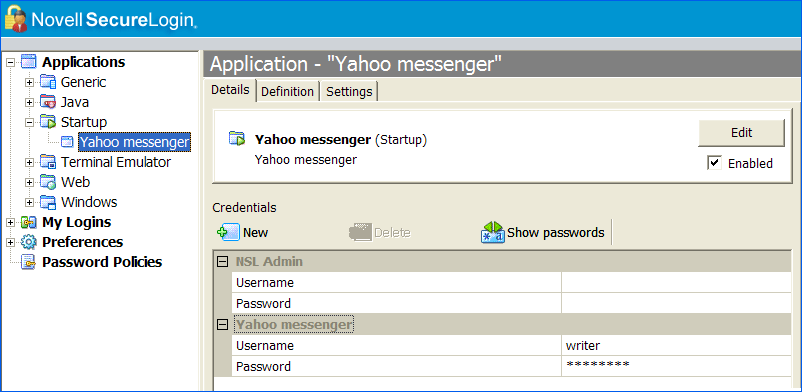
-
Select the tab. The application definition editor is displayed.
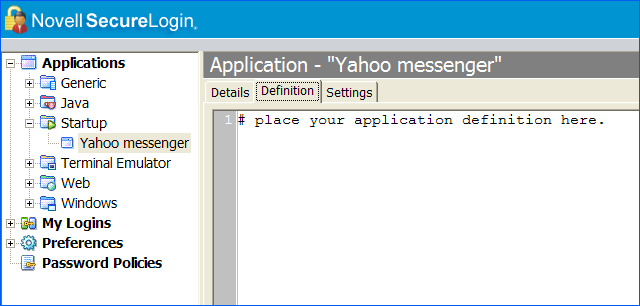
-
Modify the application definition or the predefined application, as required.
It is a good practice to include the date and a description of the changes made for future reference.
The predefined Web applications such as eBay or Hotmail under the drop-down list are titled and not . There is no difference between a application definition or an application definition.
-
Click to save changes and close the Personal Management utility.
For information on how to modify specific functions see, Section 5.0, Command Reference.
3.3.1 Building an Application Definition in the Personal Management Utility
This section describes how to create and modify SecureLogin application definitions in the Personal Management utility. It is recommended that you test the application definitions locally and then copy them to the relevant container or organizational unit in multi-user directory environments.
Use the following procedure to create an application definition for a Windows application:
-
Double-click the SecureLogin icon in the notification area to display the Personal Management utility.
-
Select > > . The New Application dialog box is displayed.
-
Click , and select the required application type from the drop-down list.
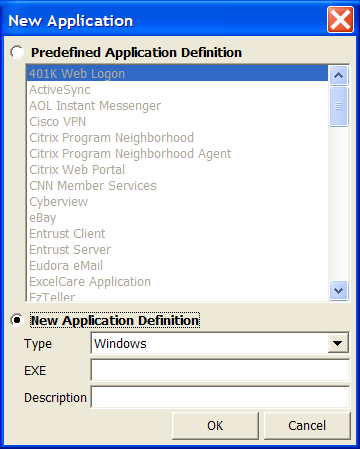
-
Specify other details such as the EXE or the description.
These fields vary based on the application definition type that you have selected. For example, if you select as the , you must fill in the and fields.
-
Click . The application definition is added to the left pane under applications and the details display in the right pane.
-
Select , and delete the text, # place your application definition here.
Figure 3-1 The Definitions Pane
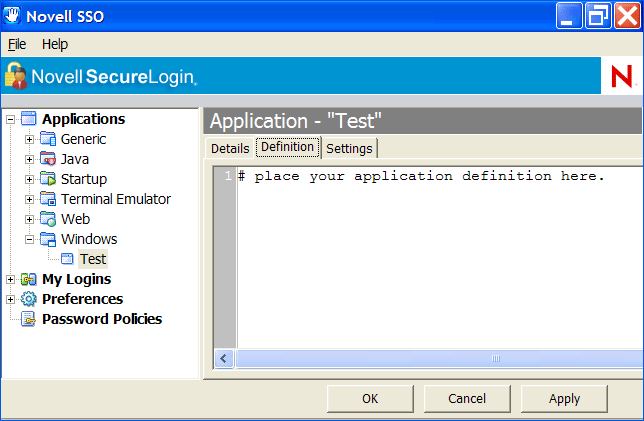
-
Specify your application details, then click to save the changes and close the Personal Management utility.
NOTE:If you are creating multiple application definitions, click to save changes without closing the Personal Management utility.
Settings Tab
Figure 3-2 The Settings Options
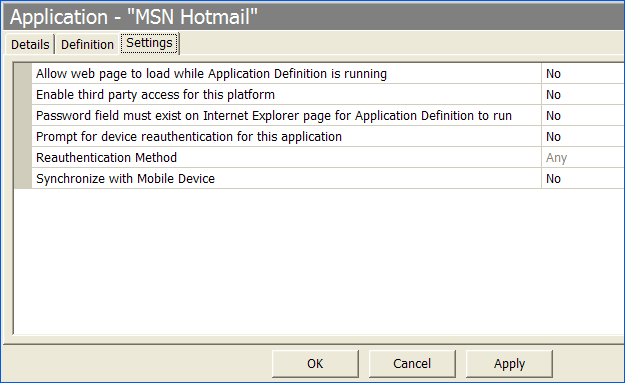
The tab includes the following options for application definitions and predefined applications:
Table 3-1 Settings Options